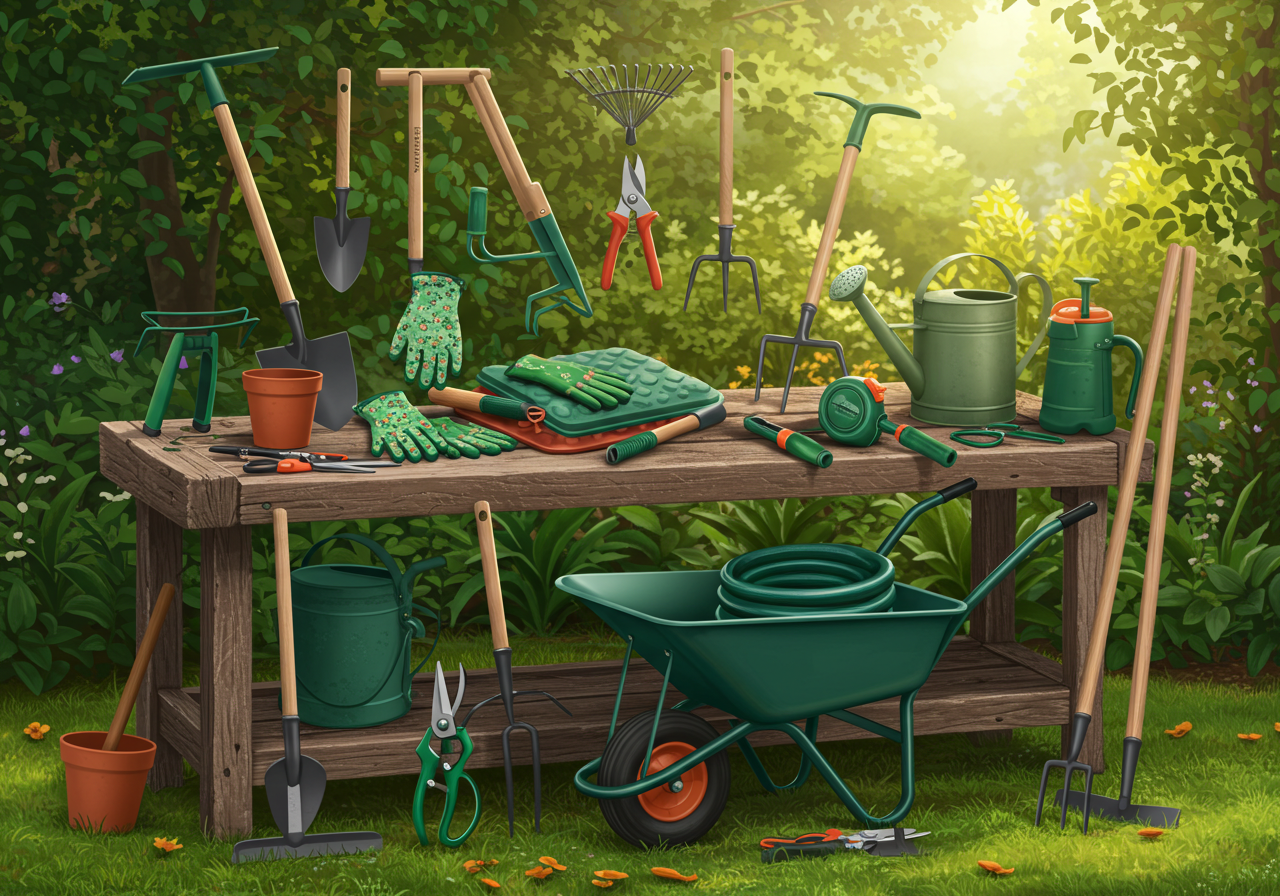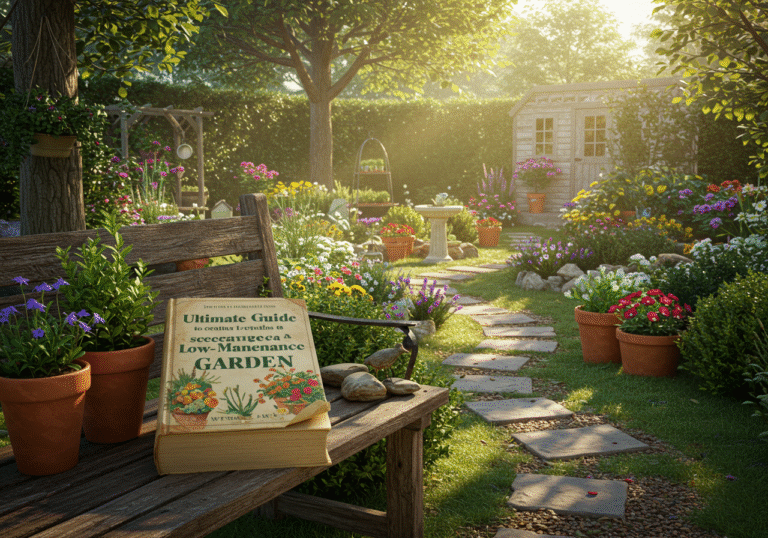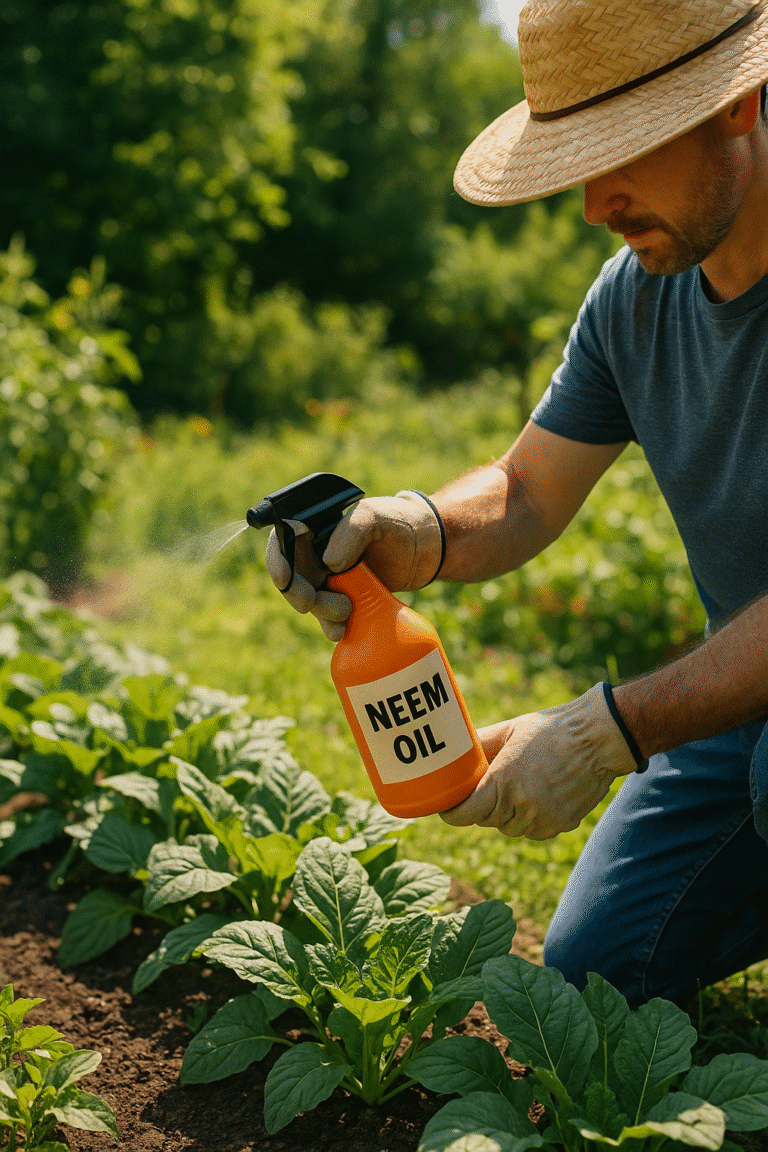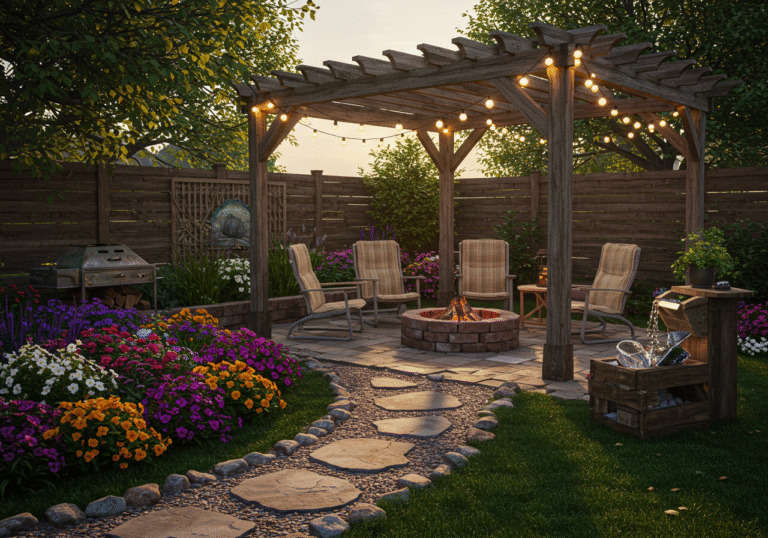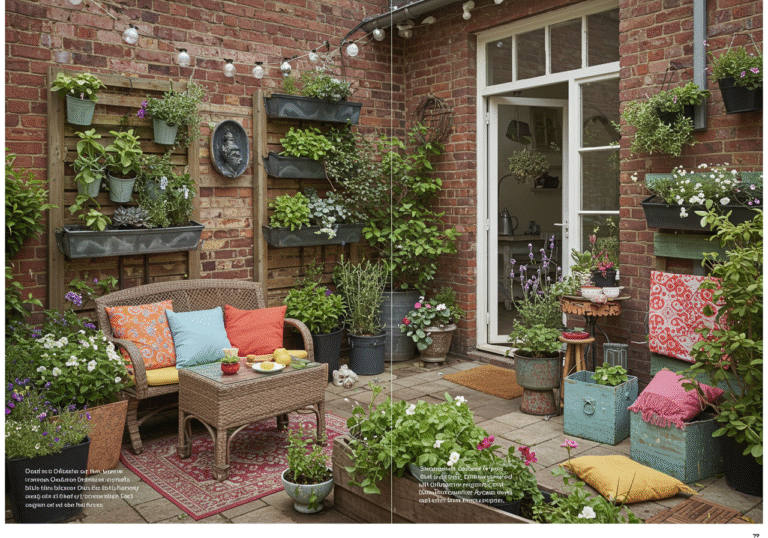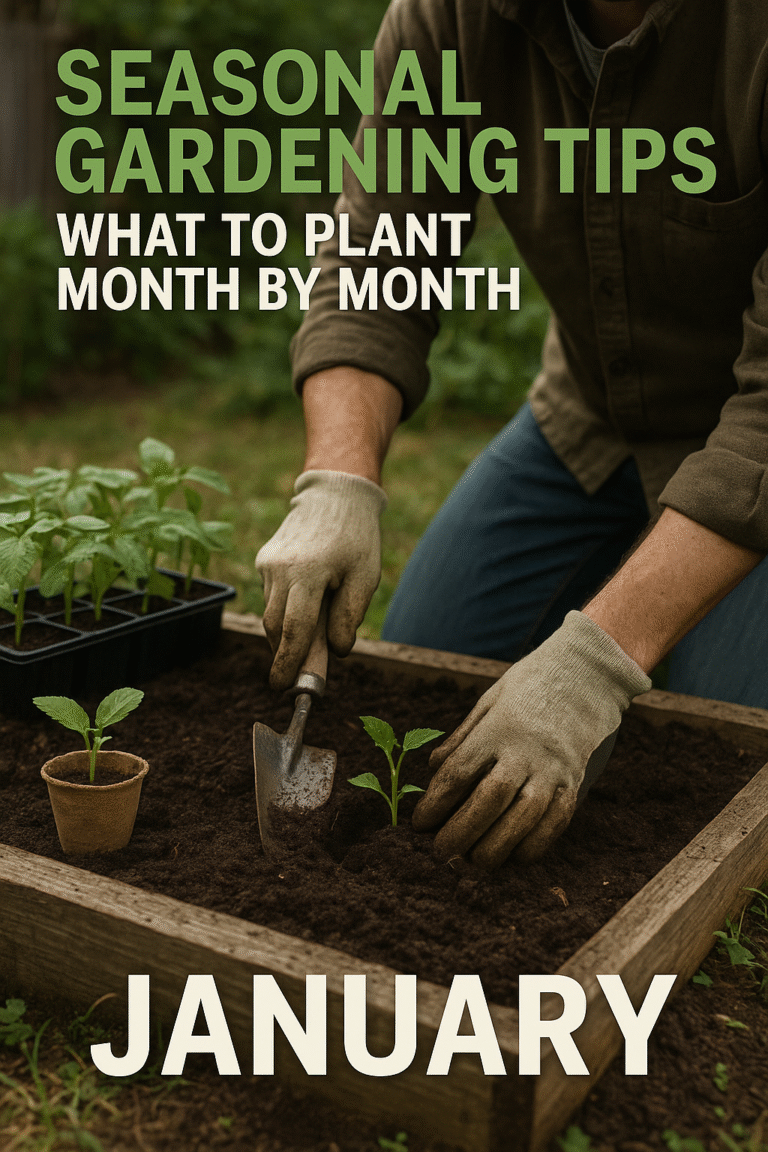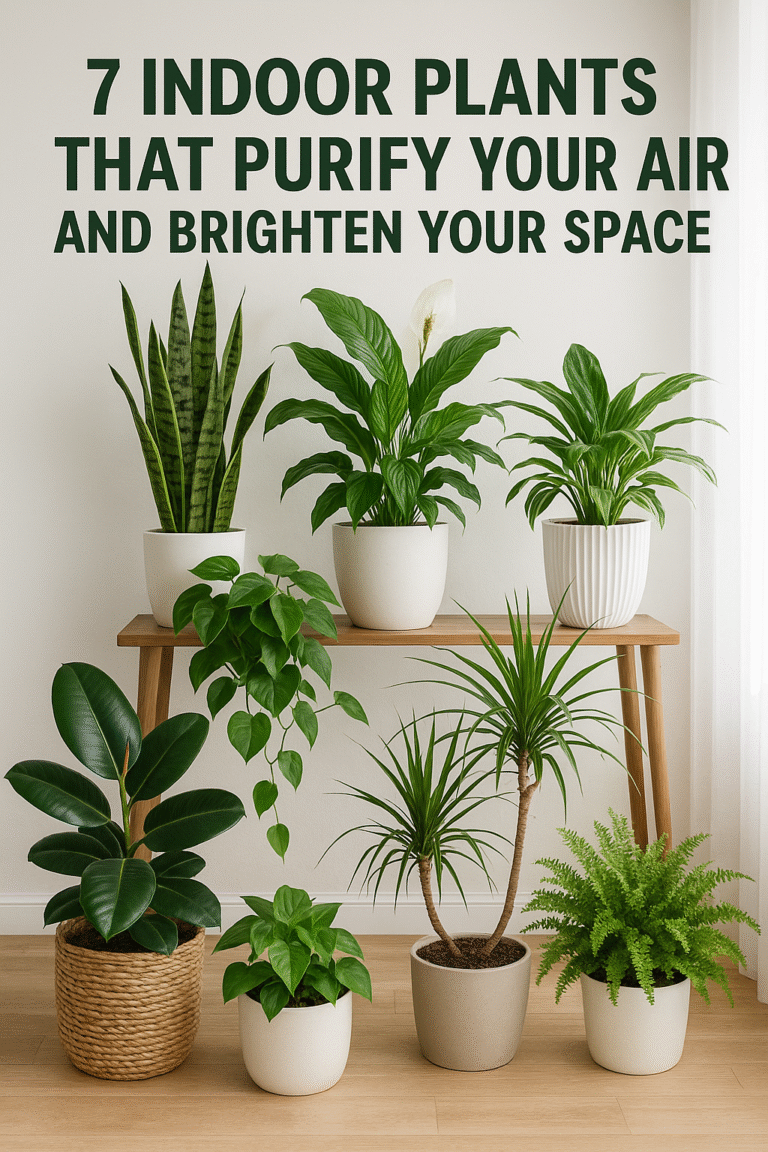Top 15 Must-Have Tools Every Home Gardener Should Own
Whether you’re just starting your gardening journey or you’ve been nurturing plants for years, having the right tools can make all the difference. From digging to pruning, planting to watering, the right equipment helps you garden smarter—not harder.
A well-stocked gardening kit doesn’t have to be huge or expensive, but there are certain essential tools that every home gardener should own. These tools make everyday gardening tasks easier, more efficient, and even more enjoyable.
So whether you’re tending to houseplants, caring for a backyard garden, or growing herbs on a balcony, here are the top 15 must-have tools that belong in every gardener’s collection.
1. Hand Trowel
This small but mighty tool is a staple for every gardener. A hand trowel is perfect for digging holes, transplanting seedlings, removing weeds, and mixing soil or fertilizer.
Look for one with a sturdy, rust-resistant blade and a comfortable, ergonomic handle. Stainless steel trowels tend to be more durable and easier to clean after use.
Use Tip: A trowel with depth markings is especially helpful when planting bulbs or small vegetables at specific depths.
2. Pruning Shears (Secateurs)
Sharp pruning shears are essential for trimming small branches, deadheading flowers, harvesting herbs, or shaping shrubs. Clean, precise cuts promote healthy plant growth and help prevent disease.
Choose bypass shears for live green plants and anvil shears for dry, woody stems. Keep the blades clean and sharp for best results.
Care Tip: Wipe down the blades after use and occasionally oil the pivot to extend the lifespan of your pruners.
3. Garden Gloves
No gardener should go without a reliable pair of gloves. They protect your hands from thorns, blisters, dirt, and insect bites.
Choose gloves that fit snugly but still allow flexibility. Rubber-coated gloves are ideal for wet tasks, while leather gloves offer protection against prickly plants and rough surfaces.
Bonus Tip: Keep a few different pairs depending on the task—lightweight for delicate jobs and heavy-duty for digging or pruning.
4. Watering Can or Hose with Nozzle
Plants need water to thrive, and how you deliver it matters. A good-quality watering can gives you precision, especially for container gardens, indoor plants, or delicate seedlings.
If you have a larger garden, invest in a garden hose with an adjustable spray nozzle to control water flow and reduce waste.
Time-Saver: Consider a soaker hose or drip irrigation system for hands-free watering in larger beds.
5. Garden Fork
A garden fork is excellent for loosening compacted soil, turning compost, and digging through dense, rocky ground. Its sturdy tines do what a shovel can’t—especially in raised beds or tight areas.
Choose one with a strong steel head and a comfortable, gripped handle to reduce hand fatigue.
Tip: A short-handled fork offers better control for small gardens or container spaces.
6. Hoe
Garden hoes are incredibly useful for breaking up soil, shaping beds, and removing weeds with shallow roots. Depending on your needs, you can choose a draw hoe, scuffle hoe, or Dutch hoe.
A wide-bladed hoe works best for larger vegetable plots, while a narrow blade is better for precision weeding between plants.
Pro Tip: Hoe early and often to catch weeds before they establish deep roots.
7. Garden Rake
After tilling or planting, a garden rake helps smooth and level soil, remove debris, and spread mulch or compost. Metal rakes are sturdy and great for heavy-duty tasks, while plastic rakes are lighter and good for leaves.
Look for adjustable heads and strong handles that won’t warp with use.
Bonus Use: Flip the rake to create shallow furrows for planting rows of seeds.
8. Spade
A spade is a must-have for digging, edging, lifting sod, and turning soil. Unlike a shovel, its flat blade makes it ideal for slicing through roots or cutting sharp borders.
Choose a spade with a solid steel head and a D-handle grip for maximum control and comfort.
Strength Tip: A full-length spade helps with leverage when digging deep holes or working in tougher soil.
9. Wheelbarrow or Garden Cart
Moving soil, compost, plants, or tools becomes much easier with a wheelbarrow or garden cart. It saves your back and lets you tackle big projects efficiently.
Foldable or dual-wheel carts are great for smaller yards or storage limitations, while heavy-duty wheelbarrows are best for larger gardens.
Efficiency Tip: Keep a dedicated garden bucket or basket inside your wheelbarrow to organize tools as you work.
10. Plant Labels and Marker Pen
Keeping track of what you’ve planted—and where—is easier with plant labels. Whether you’re growing herbs, vegetables, or flowers, labels prevent confusion and help monitor plant progress.
Use weatherproof materials like plastic, metal, or wood and a waterproof marker or garden-specific pen that won’t fade in the sun or rain.
Creative Tip: Reuse popsicle sticks or broken terra cotta pots as rustic DIY labels.
11. Soil Knife (Hori Hori)
The Hori Hori knife is a Japanese gardening tool that combines a trowel, knife, and ruler. It’s perfect for cutting roots, digging, transplanting, and measuring depth.
Its sharp, serrated edge makes it useful for dividing plants or removing stubborn weeds.
Safety Tip: Always store in a sheath or with a blade guard to avoid injury.
12. Garden Scissors
Smaller than pruning shears, garden scissors are perfect for snipping herbs, deadheading flowers, or harvesting delicate produce. They offer more precision for intricate work.
Keep a dedicated pair just for the garden and clean them regularly to prevent cross-contamination between plants.
Use Tip: Lightweight, spring-action scissors reduce strain during repetitive tasks.
13. Spray Bottle or Plant Mister
Ideal for seedlings, indoor plants, or tropicals that love humidity, a spray bottle helps regulate moisture without overwatering. It’s also useful for foliar feeding or applying homemade pest deterrents.
Look for adjustable nozzles and a comfortable grip. If you’re managing several plants, a pressure sprayer may be more efficient.
Extra Tip: Mix neem oil or mild soap in your sprayer to combat common pests naturally.
14. Garden Kneeler or Pad
Gardening often means bending or kneeling, which can strain your back and knees. A garden kneeler or foam pad provides comfort and support during long hours of planting or weeding.
Some kneelers come with side handles for easy standing, while others double as small stools or tool caddies.
Comfort Tip: Choose one that folds for easy storage and transport.
15. Compost Bin or Pile
While not a traditional “tool,” compost bins are invaluable to the home gardener. Turning kitchen scraps and garden waste into nutrient-rich compost reduces landfill waste and enriches your soil.
You can use a compact plastic bin, a tumbling composter, or even a DIY wooden enclosure. Composting makes your garden more sustainable and self-sufficient.
Maintenance Tip: Keep a small kitchen caddy or bucket to collect scraps and transfer to your bin regularly.
The joy of gardening multiplies when you have the right tools at your fingertips. With these 15 essentials, you’ll be ready to tackle any gardening task—whether it’s planting, pruning, watering, or simply enjoying the process.
You don’t need to buy everything at once. Start with a few basics and build your collection as your garden (and confidence) grows. The right tools will not only save you time and effort but also make your gardening experience smoother, more enjoyable, and more rewarding.
Happy gardening!


